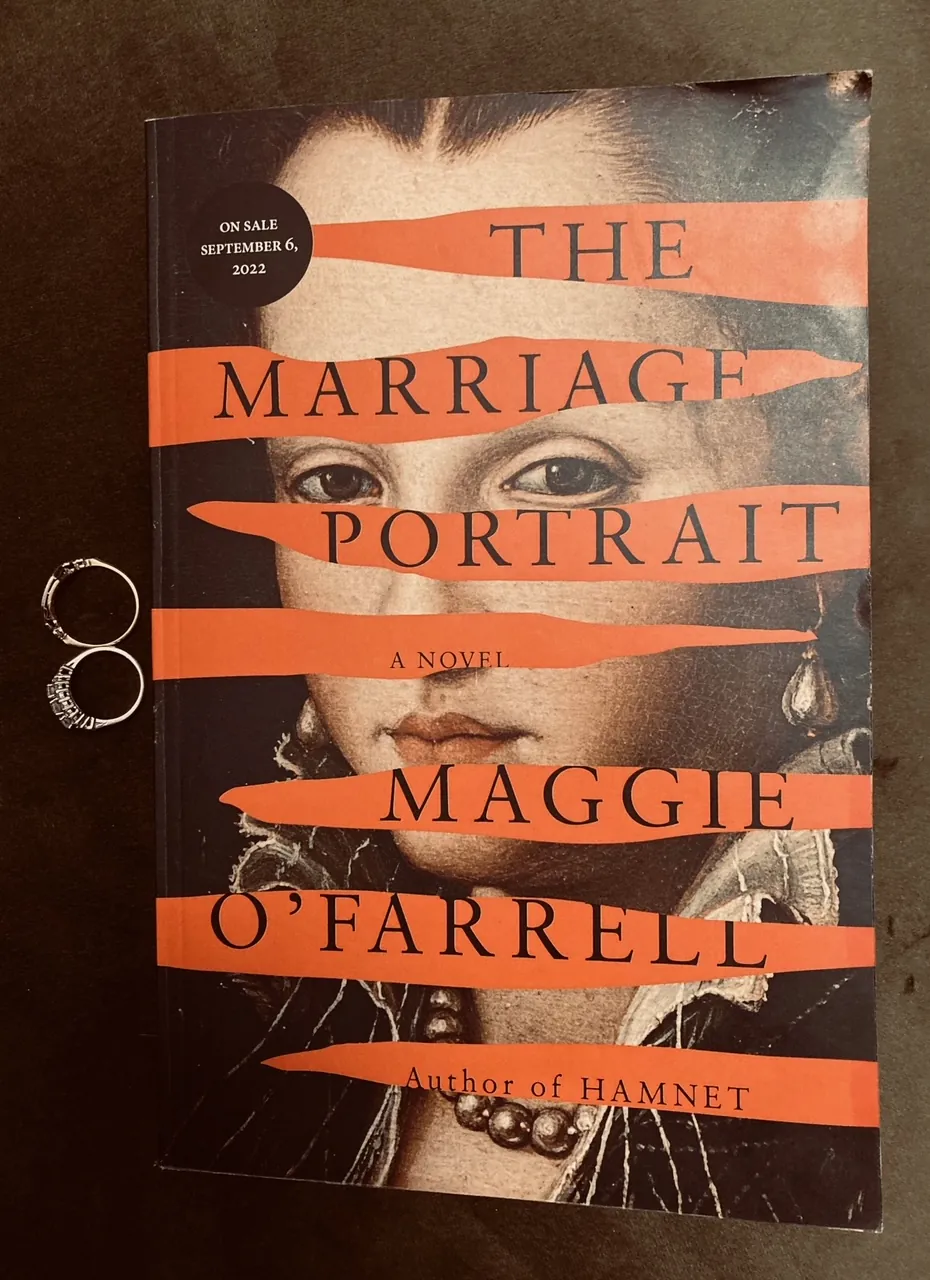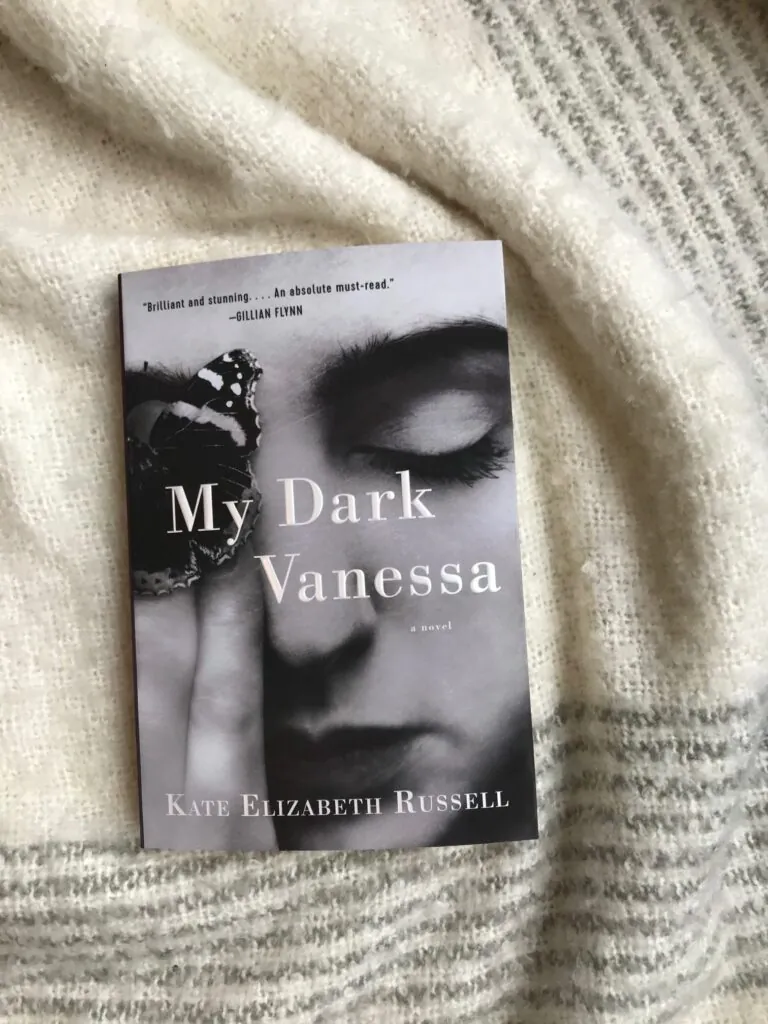Book Review: The Marriage Portrait by Maggie O’Farrell

Because it’s February, I’ve chosen three books to read that all center on the topic of love and marriage for my latest radio segment (it’s showbiz folks, you don’t need to be that creative!). The first was The Marriage Portrait by Maggie O’Farrell, which I dug out of my bookshelf after reading a very insightful review of it from Karissa here. Although a tad long for my tastes, it was a particularly successful example of a slow burn suspense, the atmosphere growing steadily darker until the very last page.
Plot Summary
It’s 1560, and fifteen-year-old Lucrezia di Cosimo de’Medici has been married off to Alfonso II d’Este, Duke of Ferrara. After only a year of marriage she is pronounced dead of fever, but it is rumoured that she was murdered by her husband. All 430 pages are written in Lucrezia’s first-person perspective, alternating between two time periods; her childhood, and shortly after the one-year mark of her marriage when she suspects her husband is plotting to kill her. The timelines eventually meet at the very end of the book when we discover the true intentions of Alfonso. We meet him early on in the novel when he is betrothed to Lucrezia’s older sister Maria, who dies suddenly after falling ill. To maintain the fortuitous linking of the two families, Lucrezia is offered instead, and they are married in an ostentatious ceremony that frightens her, as it is the first time she has been allowed out of her family’s property limits. That evening she is whisked away by Alfonso to his castle, a few days journey distance, where she is met with disdain and suspicion. She lives essentially as his prisoner, her only task to provide an heir for this bloodline to continue without interruption, securing his lineage and its associated titles. This hoped-for pregnancy does not go as planned.
My Thoughts
Lucrezia is a young woman of contradictions. Her family describes her as untamable, erratic even, prone to emotional fits, yet the reader has to keep reminding themselves that we only know her as a young child and teenager – who isn’t emotional at that point in their lives? To be married off to a man you have never met, when you’ve never even been touched by a man other than your father by that point in your life? Unthinkable to a person in 2023, but it’s understandably upsetting to a 15-year-old in the 1550s too, even if that was the end goal of her entire existence anyway. She acknowledges her limited autonomy throughout the book once it dawns on her that her union is not going to be a happy one:
“Her father would have found her an advantageous match because that is, after all, what she has been bought up for: to be married, to be used as a link in his chains of power, to produce heirs for men like Alfonso.”
-p. 282 of the ARC of The Marriage Portrait by Maggie O’Farrell
To be clear, the match is considered advantageous to the two men of each family, not Lucrezia herself. Her feelings and emotions are never considered by others in any part of the story, and the reader and her maids are the only people to understand how she truly feels.
The character of Alfonso is also an interesting one; it quickly becomes clear he is a frightening person, ruthless and prone to fits of violence and anger. But when we first meet him on the arm of Maria, he comes across as quite the opposite: a handsome stranger who shares a quirky moment with Lucrezia, at once understanding her love of animals and how special they are to her. This honeymoon-like version of Alfonso continues for the first few weeks of their marriage, until his true personality comes through – much like how I imagine most abusive partners to act. The only difference here being that Lucrezia is trapped as she is now the property of her husband, and she’s simply expected to just put up with it.
At a few points in the novel, Lucrezia achieves a sense of freedom by donning her servants’ clothes and creeping around the castle at night, unnoticed. Issues of class are occasionally touched upon here, but O’Farrell is clearly pointing to the hidden burdens that women of wealth bear at that time. Their very movements are limited, so although they are taken care of, to be seen as the plaything of someone else brings its own set of problems. This is a thoughtful book that will make any person grateful to be alive today, but for (most) women in particular it especially points to how far we’ve come.





Did you read O’Farrell’s Hamnet and Judith? I loved that novel so much. This one I just couldn’t get into.
I haven’t read it, but everyone keeps saying I must!!! One commenter said it brought her to tears!
It was excellent!
Great review! I’m glad you mostly enjoyed this.
thank you! haha
Now, how did you connect a story about a murdered wife to romance and Valentine’s Day? 😂
It was a tenuous connection – love, marriage, etc LOLOLOL
“He was wrong, I shot him.” Wanda Sykes talking about her parents’ marriage.
This sounds good to me… I love a slow burn! And I’ve liked a couple of her other books, although Hamnet wasn’t one of them. We have it on our Literary Wives list, though, so it’s coming!
Everyone raves about Hamnet!
I’m reading this now and am very much enjoying it. I liked Hamnet a lot too.
Oh good to know! Glad you are enjoying. Yes I’ve heard wonderful things about Hamnet as well, that will be next on my Maggie O’Farrell list.